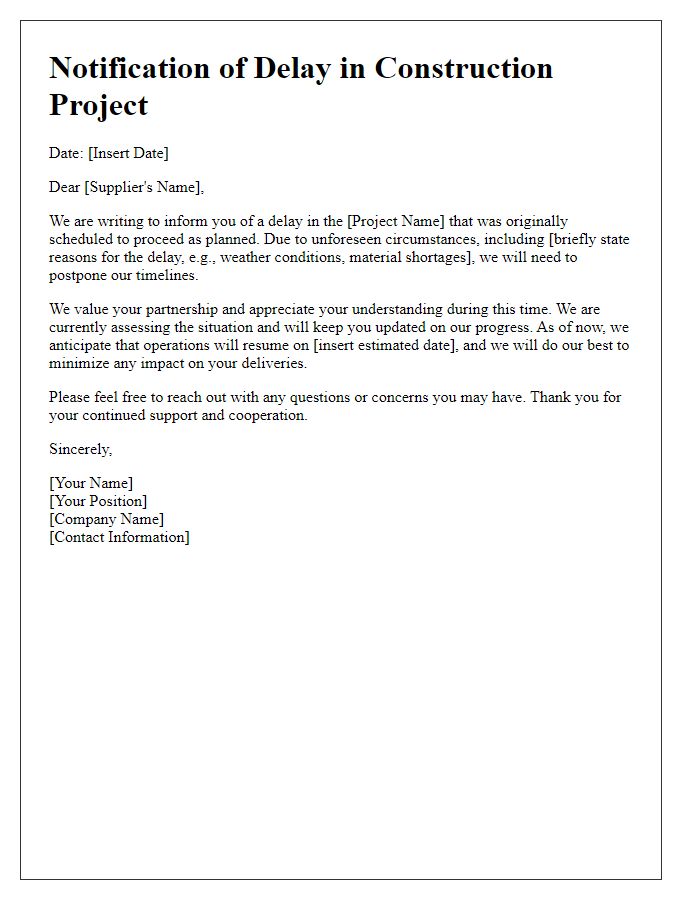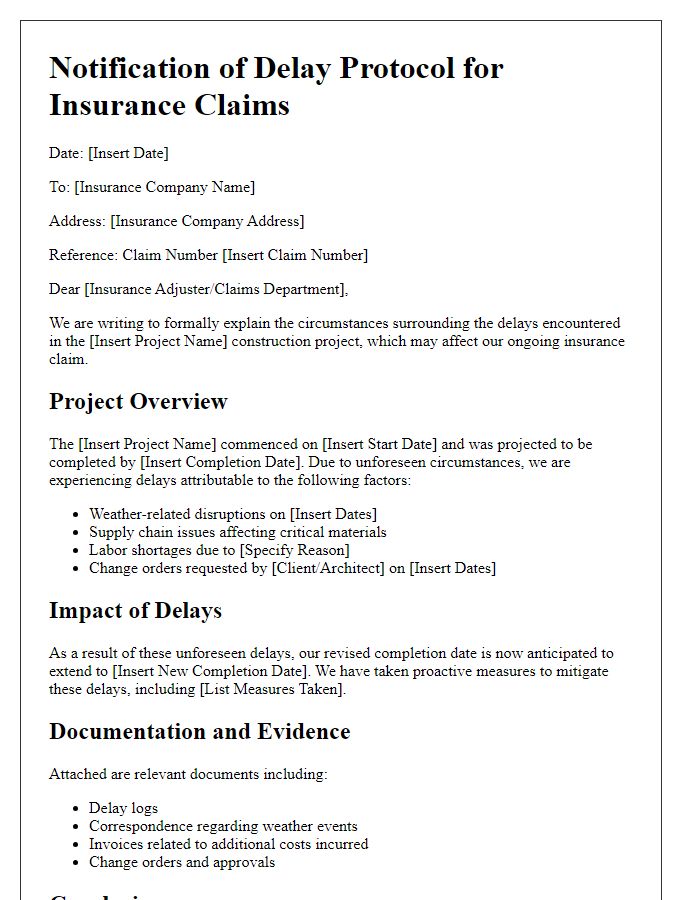Hey there! We all know that construction projects can sometimes hit unexpected bumps along the way, causing frustrating delays. Whether it's due to weather conditions, supply chain issues, or unforeseen circumstances, clear communication is key to keeping everyone in the loop. In this article, we'll explore how to craft an effective letter that explains project delays while maintaining professionalism and transparency. So, let's dive in and discover how to navigate these tricky conversations together!

Project Overview: Scope, Timeline, Stakeholders
Construction project delays can significantly impact overall progress and stakeholder satisfaction. Factors such as unexpected weather conditions, material shortages, or labor disputes often affect timelines. For example, if a construction project in New York City experiences heavy snowfall in January, it can halt exterior work and cause a domino effect on subsequent tasks. Key stakeholders, including contractors, architects, and investors, require transparent communication regarding project scope changes or timeline adjustments. Providing a detailed overview of these factors not only ensures informed decision-making but also maintains trust and accountability among all parties involved.
Cause of Delay: External Factors, Internal Challenges
Construction project delays can stem from external factors such as extreme weather conditions or supply chain disruptions. Inclement weather events, including heavy rainstorms or snow, can halt progress on-site, affecting timelines. Additionally, global supply chain issues have caused shortages of essential materials like concrete and steel, leading to unforeseen delays in procurement. Internal challenges play a significant role as well, including labor shortages or equipment malfunctions. Insufficient skilled labor in the construction sector has led to delays in completing tasks, while unexpected breakdowns of machinery can halt work entirely, further compounding the timeline. This combination of external and internal factors requires careful management to mitigate delays and keep the project on track.
Impact Assessment: Budget Implications, Schedule Adjustments
Construction project delays can significantly impact both budget and schedule. Budget implications arise from increased labor costs, potential contract penalties, and additional expenses for materials due to price fluctuations. For example, delays extending beyond a month may result in an estimated 10-20% increase in labor costs. Furthermore, if the project is located in New York, for instance, local regulations may impose fines for extended completion times. Schedule adjustments become necessary as original timelines shift; tasks may need re-sequencing, potentially affecting subcontractor availability. An extension of the timeline can also lead to resource allocation issues, requiring a re-evaluation of project management strategies to align with new completion dates. Proactive communication with stakeholders becomes essential to manage expectations amid these changes.
Mitigation Strategies: Revised Plan, Resource Allocation
Construction project delays often arise from unforeseen circumstances, like supply chain disruptions or inclement weather conditions. Mitigation strategies are vital for addressing these challenges effectively. A revised plan might include an updated timeline with new milestones that accommodate the delays while ensuring project completion within acceptable limits. Resource allocation plays a critical role in success; for example, reallocating skilled laborers or materials from another project can minimize downtime. Additionally, incorporating project management software can enhance communication among stakeholders and streamline workflow, reducing potential delays. Efficiently addressing these aspects can significantly improve project timelines in the construction industry.
Communication Plan: Stakeholder Updates, Feedback Mechanisms
In construction projects, delays can significantly impact timelines and stakeholder expectations. A comprehensive communication plan is essential for managing updates and feedback mechanisms efficiently. Regular stakeholder updates should occur bi-weekly, allowing for consistent information flow regarding project progress and any unforeseen challenges. Feedback mechanisms, including surveys or dedicated communication channels, can facilitate stakeholder input and concerns, fostering transparency. Key stakeholders, such as project managers, subcontractors, and local authorities, should be identified to ensure targeted communication efforts. Contingency plans must also be established to address delays, outlining potential solutions and revised timelines, ensuring all parties remain informed and engaged throughout the project lifecycle.
Letter Template For Construction Project Delay Explanation Samples
Letter template of construction project delay explanation for stakeholders.

Letter template of construction project delay announcement to suppliers.

Letter template of construction project delay justification for regulatory authorities.

Letter template of construction project delay communication to subcontractors.

Letter template of construction project delay formal response to complaints.

Letter template of construction project delay summary for project reviews.

Letter template of construction project delay protocol explanation for insurance claims.







Comments